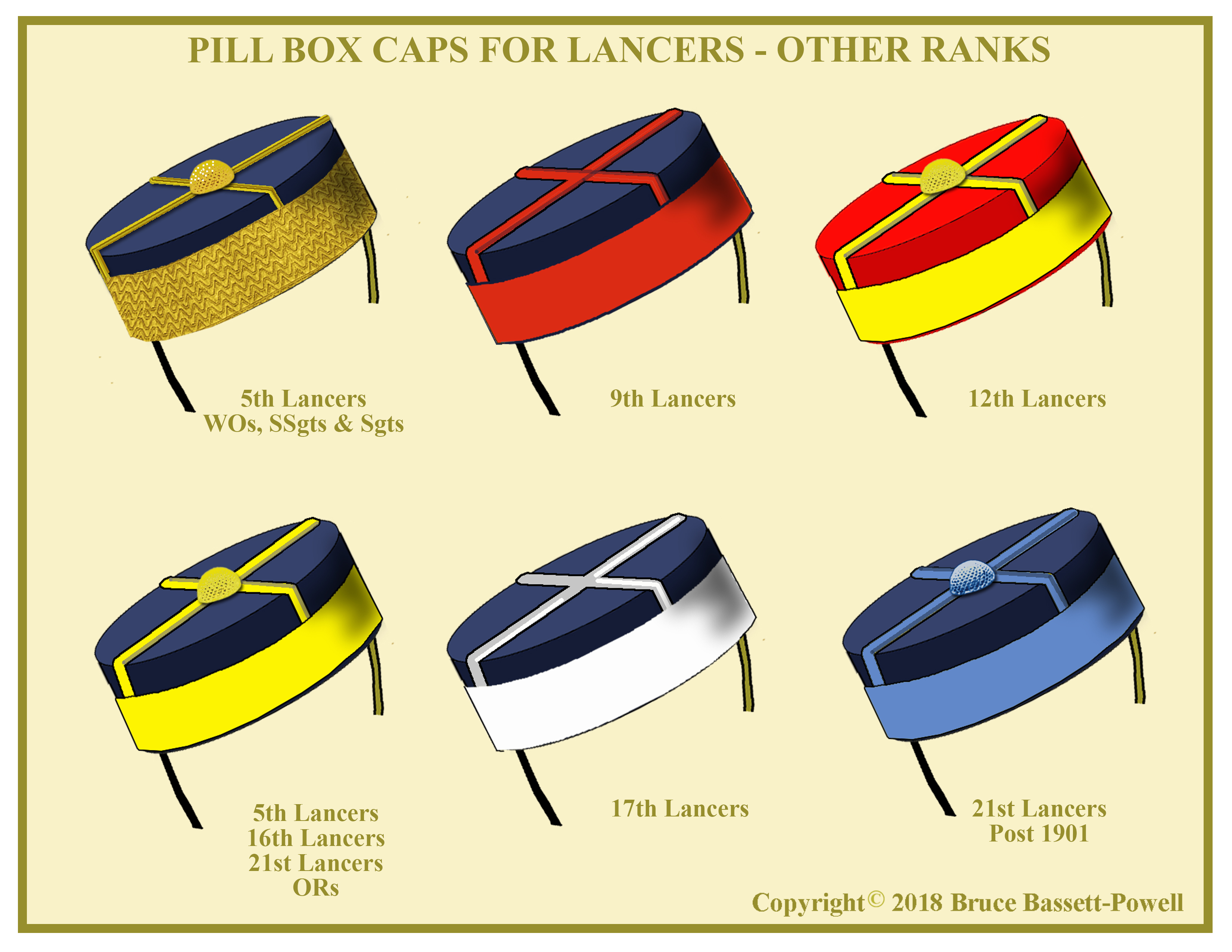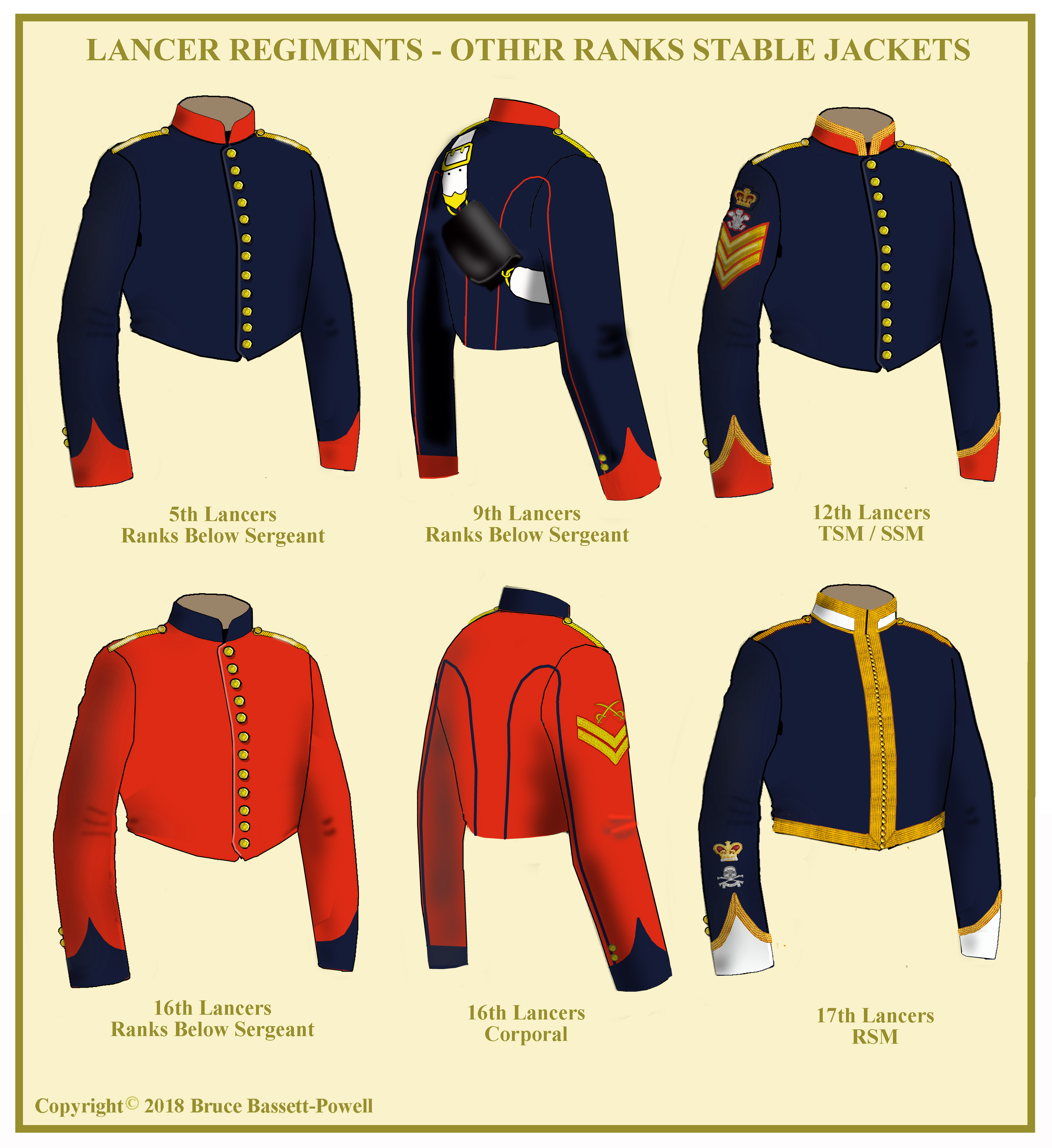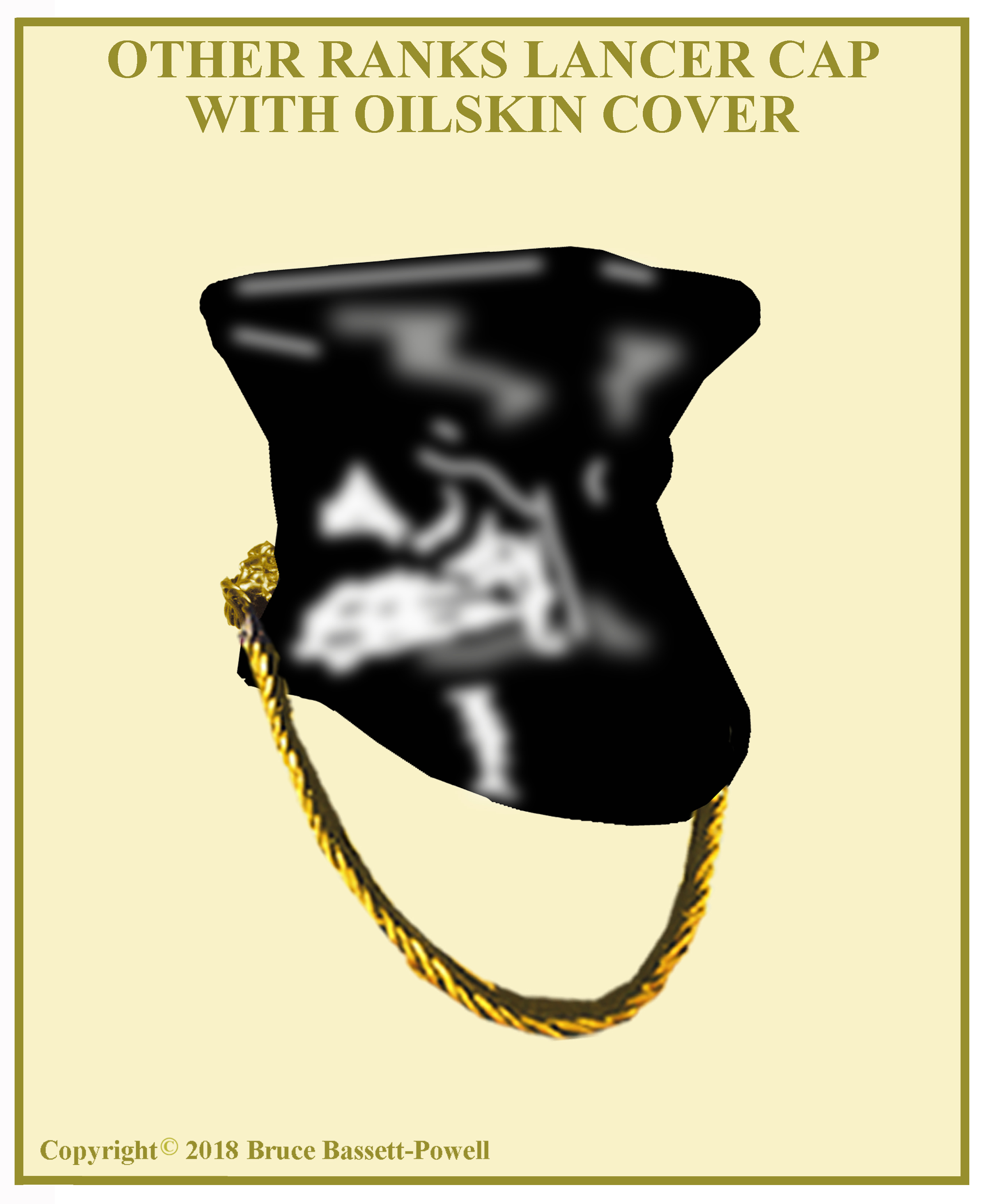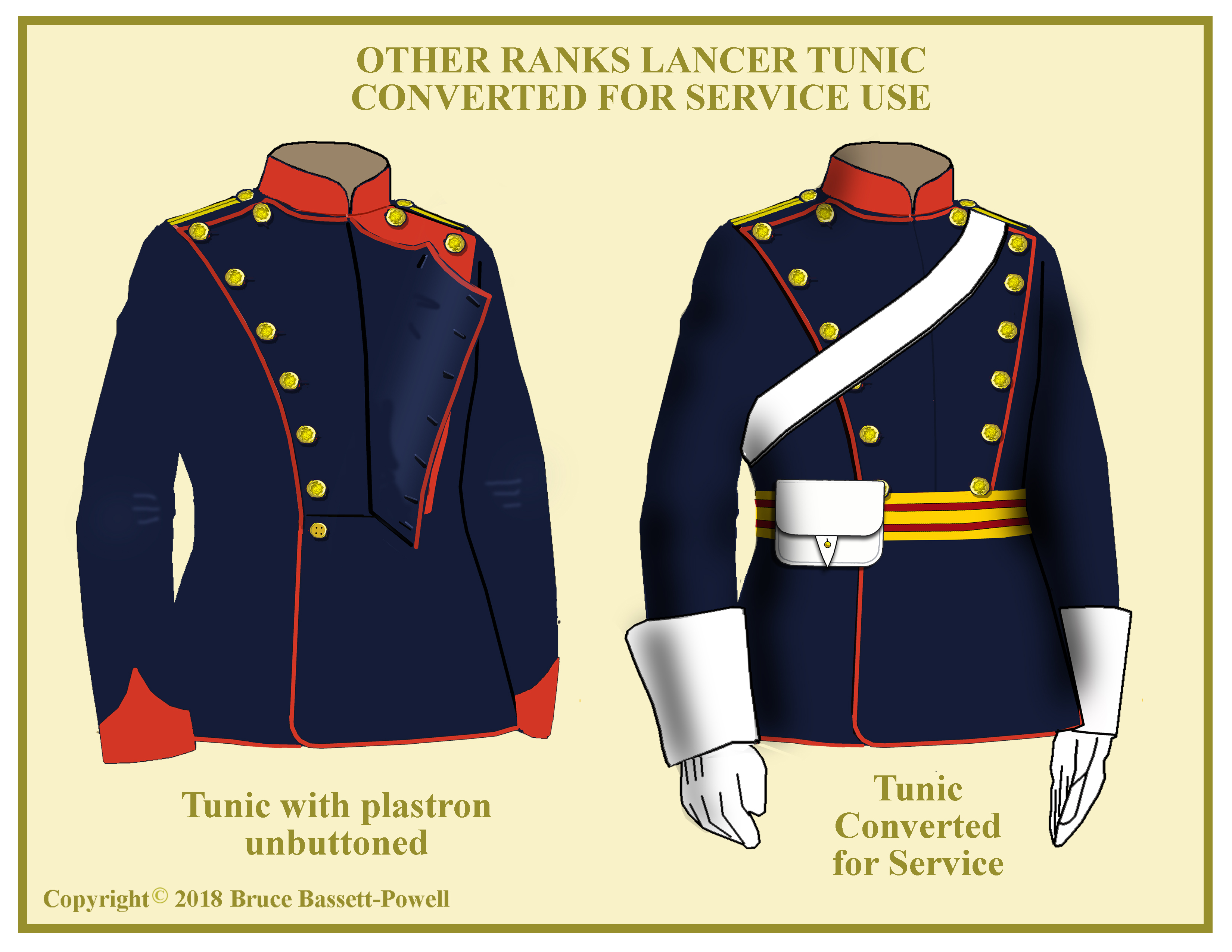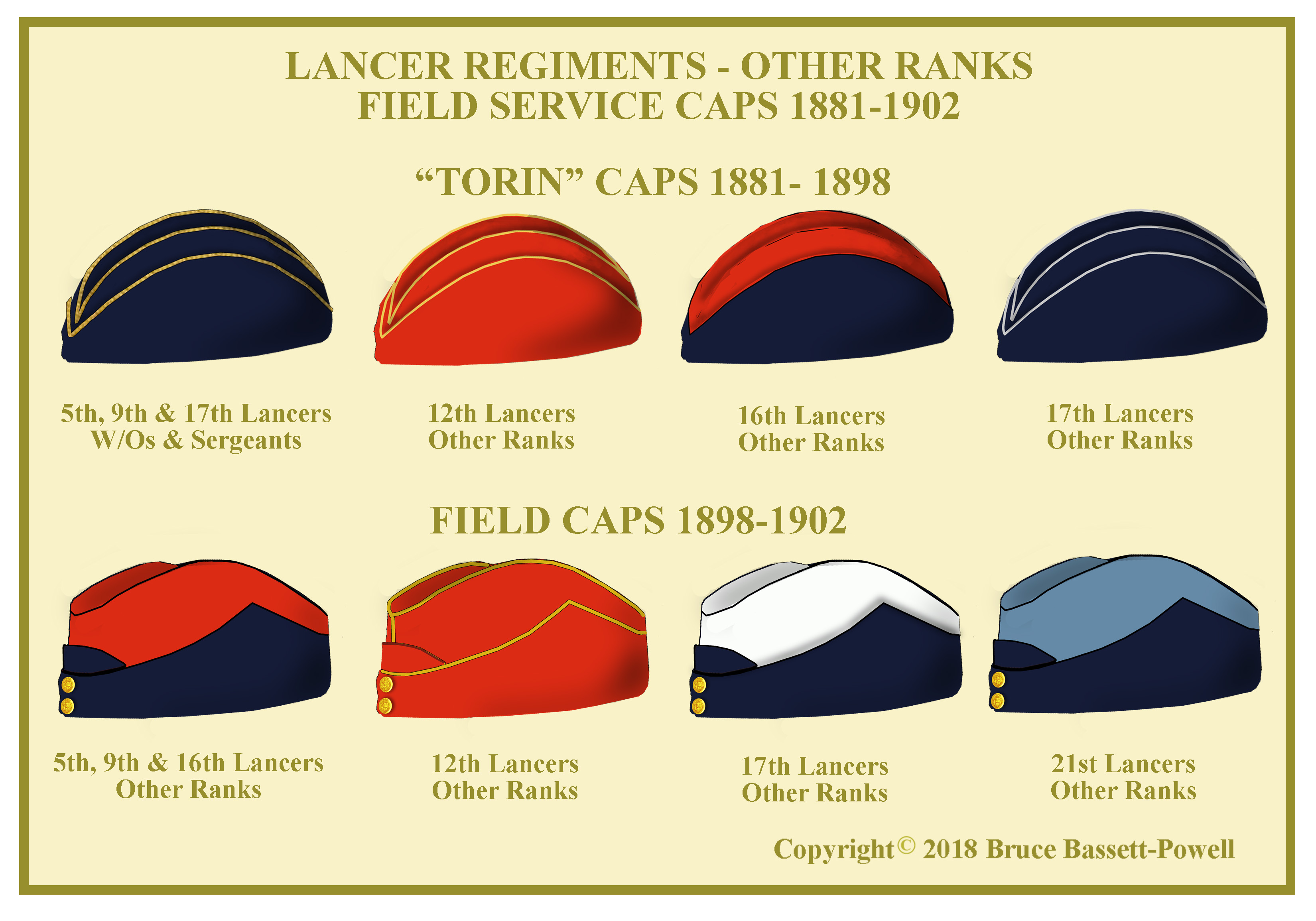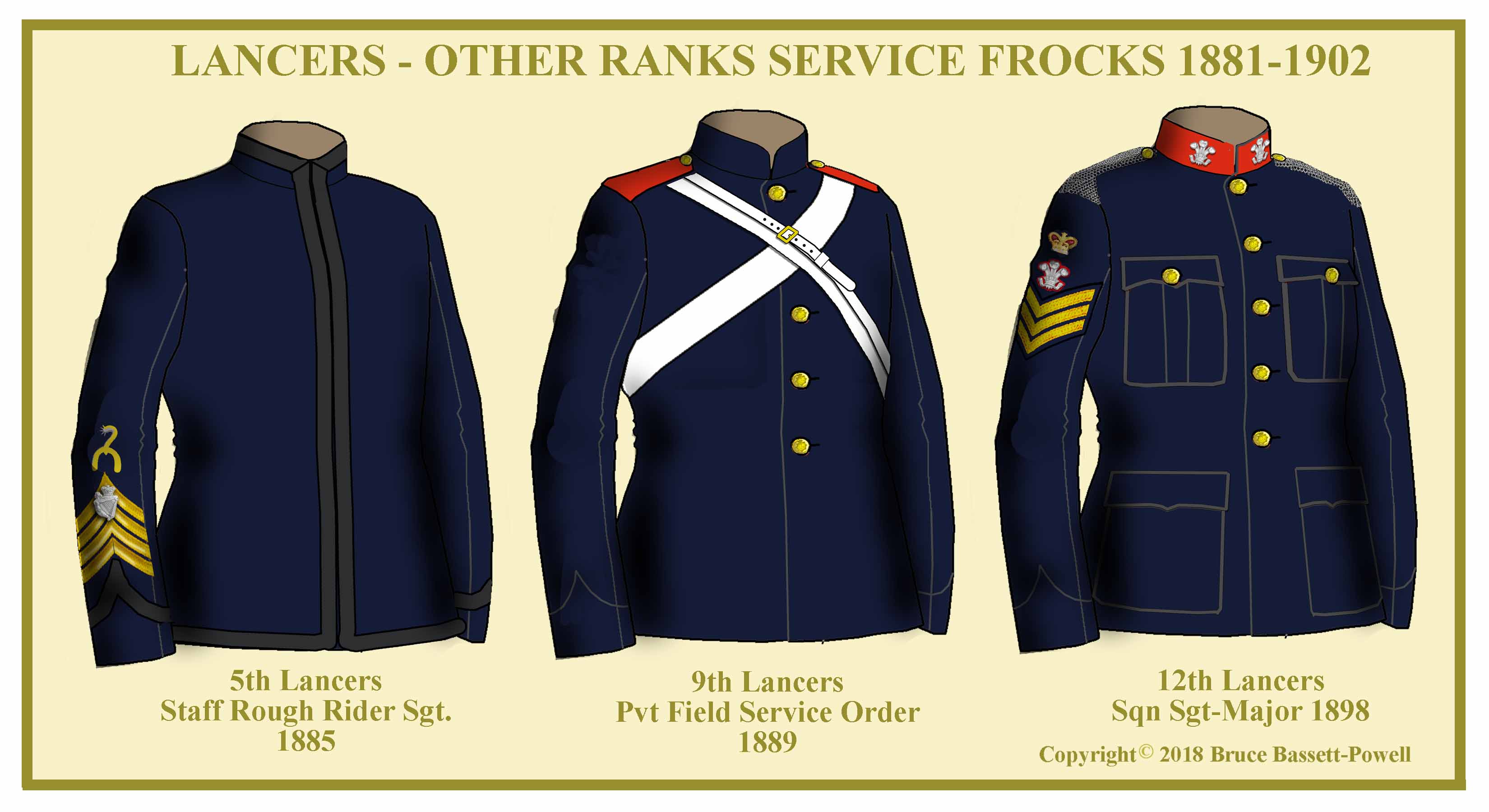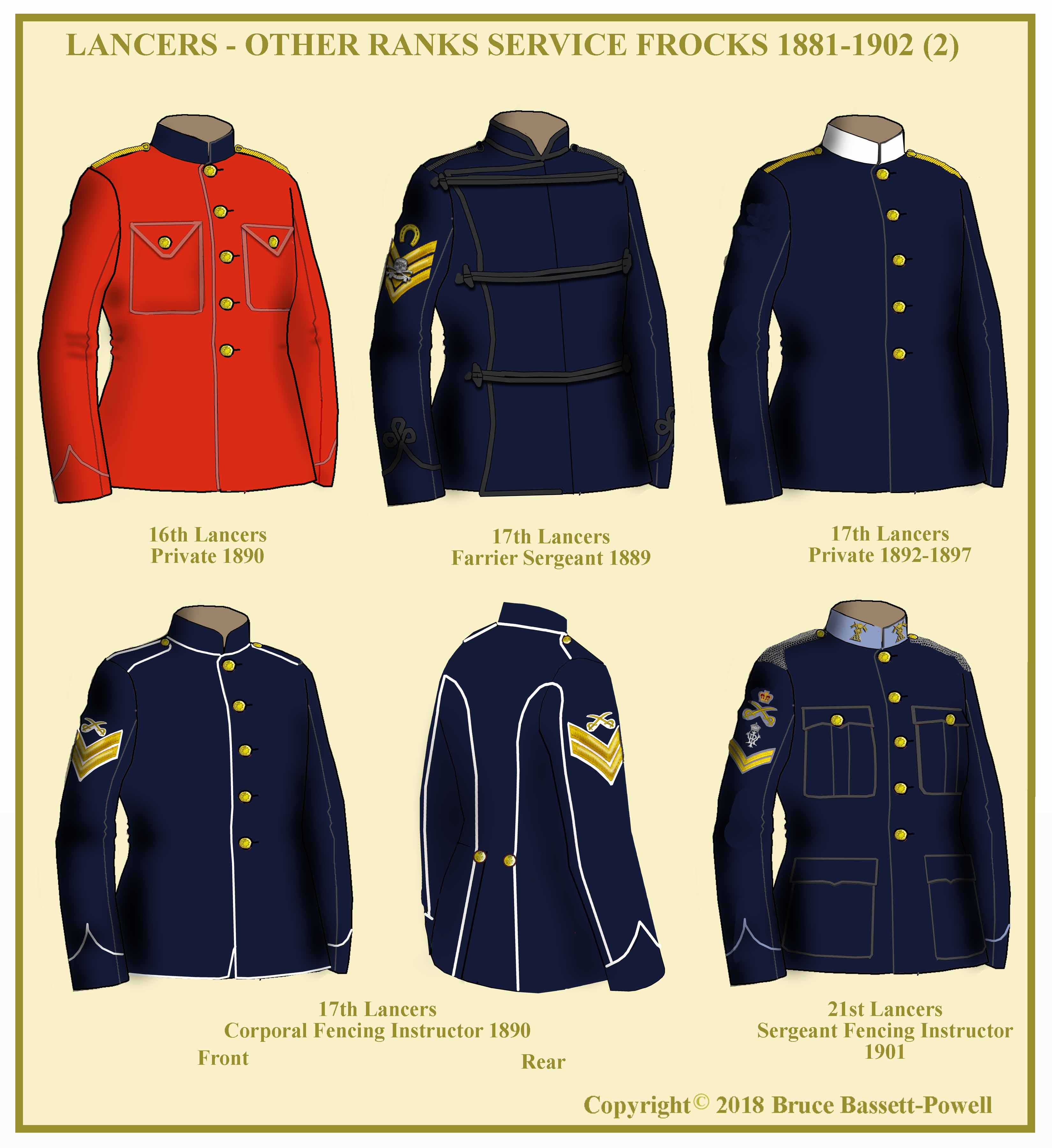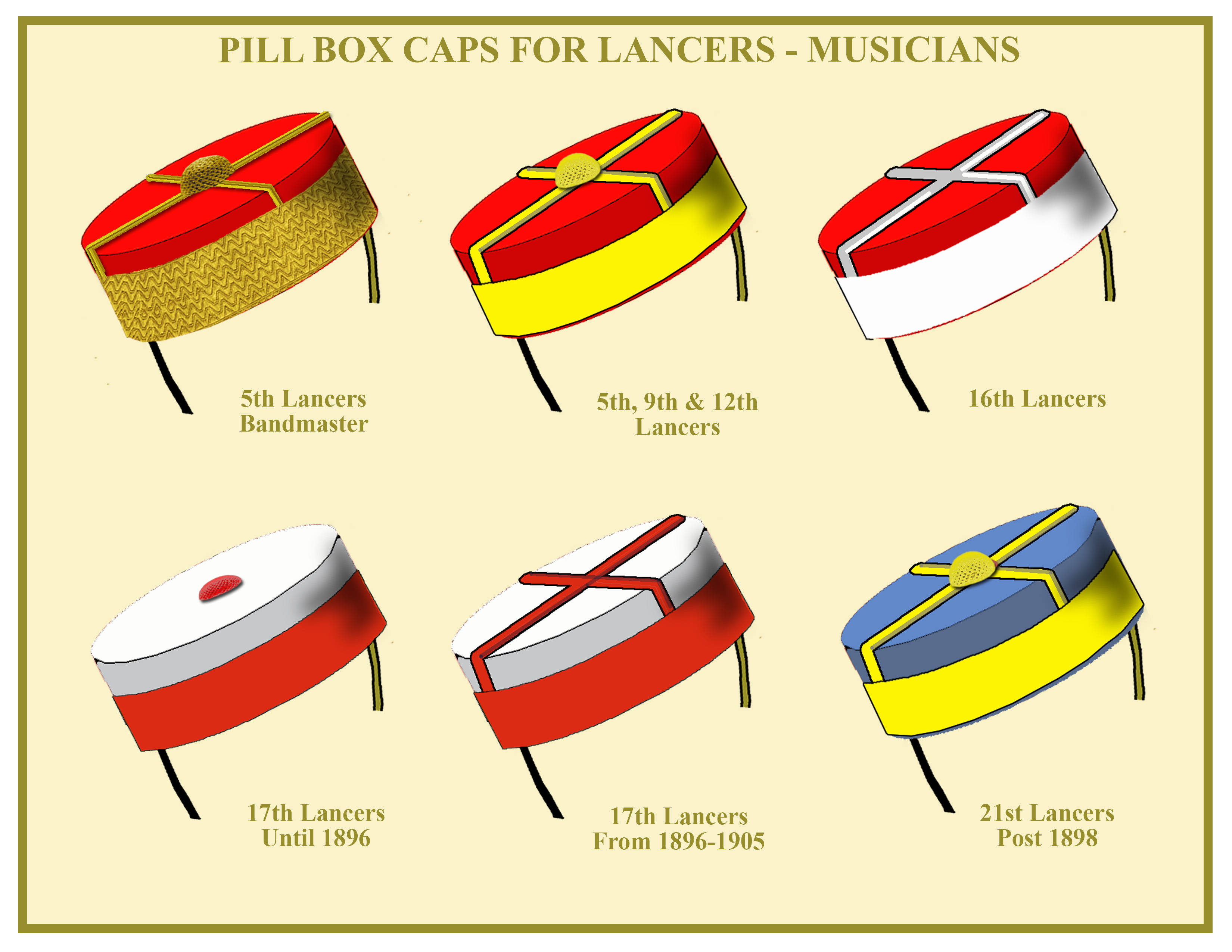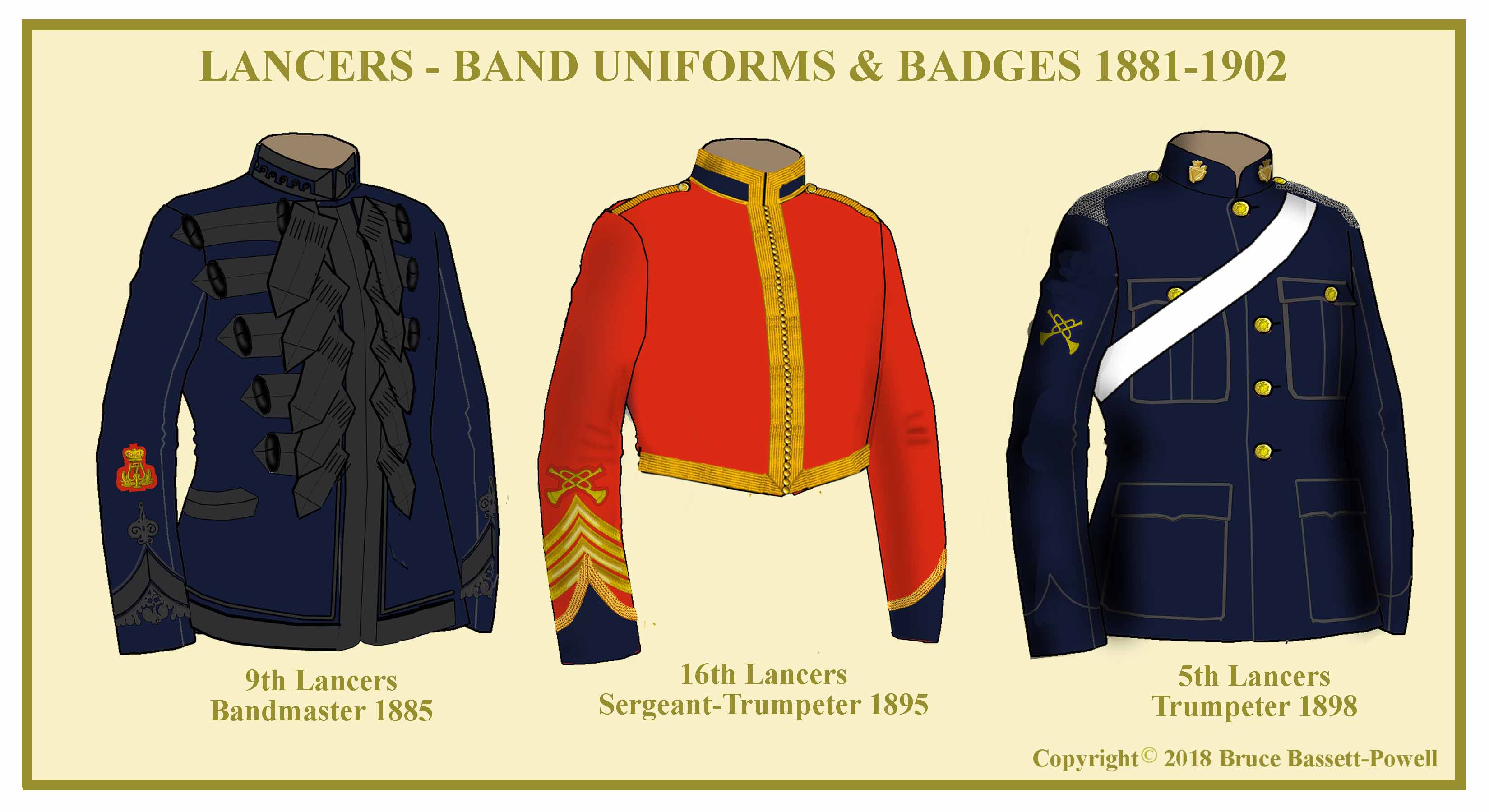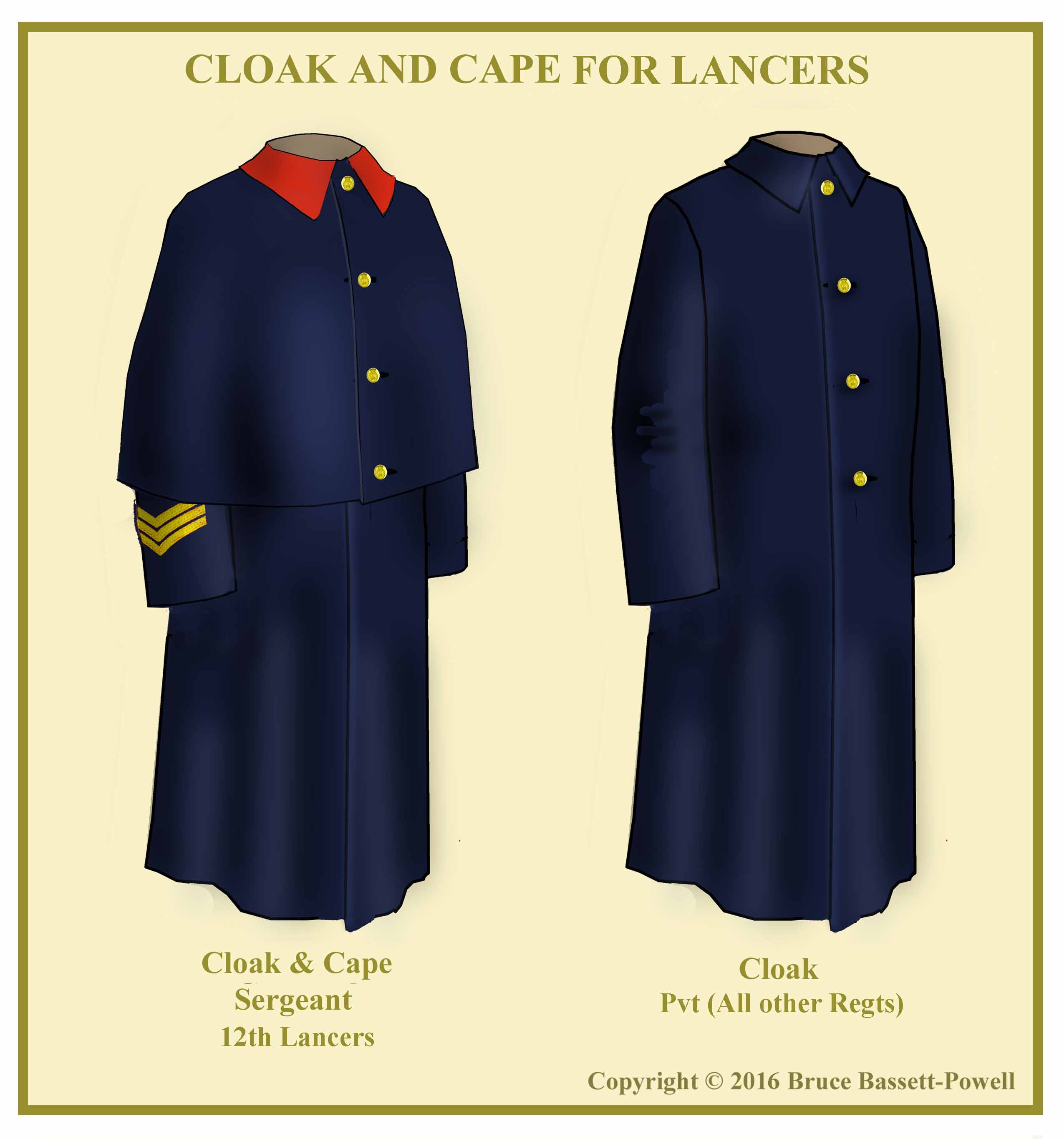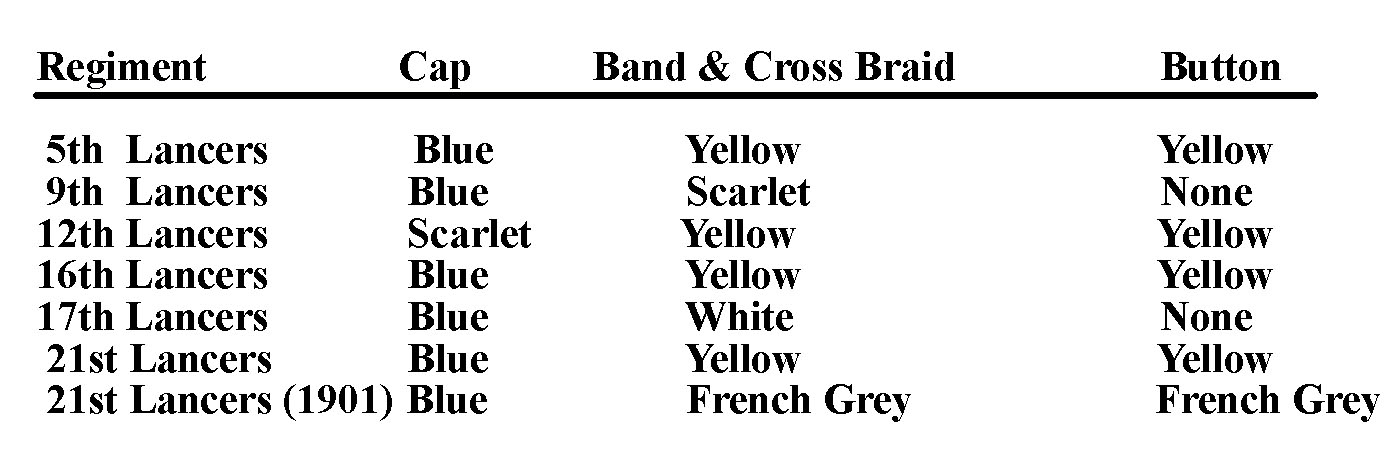UNIFORMS, ARMS & EQUIPMENT - LANCERS
UNDRESS UNIFORMS FOR OTHER RANKS & MUSICIANS
UNDRESS CAPS
Like the rest of the cavalry, the round forage cap, without peak was worn by all ranks. Warrant Officers and sergeants had gold lace bands like the officers with the gold braid across the crown.
The rank and file had coloured bands and lace according to regiment. The colours were as follows:
The scarlet band and cross braid on the 9th Lancers cap dates from about 1874* while the French Grey on the 21st’s caps was adopted just after the South African War.
* Most photographs show no button on the top. However, some illustrations show a yellow or red button.
STABLE JACKETS
The stable jackets followed the same pattern worn by the rest of the cavalry with facings on the pointed cuffs and collars. The lace on the rear seams distinguish the Lancers from other regiments. Warrant officers and Staff wore wide lace on collar, cuffs and down the front and along the bottom of the jacket, while sergeants had lace on collar and cuffs only. As with all of the cavalry, the stable jacket for other ranks was officially abolished in 1897, but still worn by many. The 21st Lancers never wore one.
FIELD SERVICE DRESS
Alone amongst the cavalry, Lancers had the opportunity to adapt their full dress for field service wear. The cap was issued with a foul weather oilskin cover with was attached with black buttons to keep the shape (somewhat!). Like the officers, other ranks were able to unbutton their plastrons over to conceal the facing cloth as shown in the illustration.
With the arrival of service frocks in the late eighties and nineties, this practice began to dwindle, although the oilskin covers could be seen in use, even with khaki service dress, right up to 1914.
FIELD SERVICE CAPS
The early Torin caps were worn by sergeants and above with gold piping on the crown. They were mostly blue at first, with the exception of the 12th which wore scarlet, with yellow piping (white for the 17th) on the seams. The 16th were wearing blue with scarlet tops by 1893.
The new folding field caps of 1896 followed the colour scheme of officers of scarlet body with blue flaps, mostly without piping except for sergeants and above who had gold piping. The 12th continued to wear their scarlet caps. It is interesting to note that, at least from photographic evidence, that lancers preferred to wear their pill box caps on field service rather than FS caps which were worn mostly in barracks.
FIELD SERVICE FROCKS & PATROL JACKETS
The use of field service frocks followed that of the rest of the cavalry. One of the difficulties for researchers is to determine if many of the frocks had rear seam piping. Black and white photography is no help except for the 17th Lancers whose piping was white. That regiment seems to have worn a piped frock in the early 1890s at Hounslow (A photo of a swordsmanship instructor proves that) but later, a much plainer frock with only a white collar (and no pockets) seems to be in wear.
Warrant officers and sergeants are often shown in patrol jackets. The most common being the one of the 5th Lancers in the illustration. Some RSMS and RQMS wore a full patrol jacket with Black mohair loops (See the Bandmaster below). The patrol jacket of the 17th Lancer sergeant is very unique and comes from a photograph (also in Hounslow) of the early 1990s.
UNIFORMS OF BANDSMEN & TRUMPETERS
Musicians of the Lancer regiments did not have any particular distinctions to mark their trade either on their full dress or undress uniforms, other than the badge on the sleeves of trumpeters. The only distinction they enjoyed was with their pill box caps which had reverse or special colours. Up until the mid 1870s, the 17th Lancers trumpeters wore red plumes.
The 17th Lancer’s cap was white with scarlet band and button until about 1897 when the cross braids without buttons were adopted.
CLOAKS AND CAPES
The cloaks and capes for lancers were of standard cavalry patterns. The 12th Lancers had scarlet collars.



